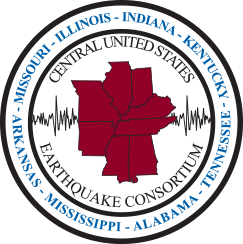Rebuilding Smarter and Stronger
A flood can disrupt your life and make you feel overcome by events. With time, this feeling will change into a sense of urgency to get back to normal. It is during this period that you should step back and look at how you can rebuild smarter and stronger.

If you live in the central U.S. where a damaging earthquake can happen at any time, you should examine the added safety benefits gained by performing an earthquake retrofit along with post-flood repairs.
Most homes constructed before 1990 in the central U.S. were built without seismic design considerations.
This means they aren’t built to withstand earthquake shaking, which can cause structural damage or collapse. Retrofitting (strengthening) a structure to resist this shaking can be an expensive proposition because you must remove contents of the home and expose its framing system. Unless you are undertaking a remodeling project, you will most likely not go to the effort required to do this. Removal of this material can be dirty, expensive, and time consuming. However, since this work is normally required following a flood, you may find it a perfect time to perform a seismic upgrade.
Did You Know?
As you begin the rebuilding process, you should talk with your local building official, your local or state emergency management agency, and a construction professional to address the following issues:
What flood-related rebuilding requirements
will be placed upon you (elevating the
structure, relocation, buyout, etc.)?
What type of seismic retrofitting is applicable for your type of structure (i.e. foundation, construction materials, etc.) and determine a budget for seismic upgrades?
After The Water Goes Down

You will find this is a critical point
You will find this is a critical point in both time and construction considerations for flood-related repairs and seismic retrofits. To respond favorably in an earthquake, foundation, walls, and roof systems need to be tied together. This creates a “continuous load path,” and allows the building to move as a single unit rather than each system moving as individual parts. Without this, moderate to strong shaking can lead to structural damage or collapse. While complete collapse in a single-family home is rare, partial collapse is a real possibility.

Additionally, other factors may play a role in the cost and level of a seismic retrofit
- Original design of the home (multi-story, irregular shape, etc.)
- Location of the home (underlying geology or soil conditions)
- Other unique factors (elevated structure, non-structural elements, etc.)

Homes built on a traditional “slab on grade” foundation have limited possibilities
while elevated homes that sit on cripple walls, piers, or have basement walls, have several retrofit options. Homes that require significant elevation (10 feet or more) to remove flooding risks create a retrofit situation that may require the expertise of a structural engineer. This will help ensure your design meets performance criteria for both flood and seismic risks, but also wind hazards as well. In addition, the type of home you have will help determine the type of retrofit that is appropriate and whether or not the work can be done by you or contracted to a professional.

The most cost-effective time to strengthen your home against disasters is at the time of construction
If your home wasn’t built with seismic considerations and has been damaged by a flood, we encourage you to consider rebuilding smarter and stronger by incorporating an earthquake retrofit into your post-flood rebuilding plan. Doing so is an economical retrofit alternative that secures your home against earthquake damage and enhances your family’s overall safety.
Strap and Anchor Retrofit Example

The strap and anchor retrofit in this example ties the frame system together to create a continuous load path. This technique mitigates risk from both earthquake and wind events. To determine the best retrofit options for your structure, you should consult with a licensed design or engineering professional.
To learn more about retrofitting your home to withstand earthquakes or floods, we encourage you to look at the following Federal Emergency Management Agency (FEMA) publications:
• FEMA 232 – Homebuilder’s Guide to Earthquake Resistant Design and Construction
• FEMA 312 – Homeowner’s Guide to Retrofitting (Floods)
• FEMA 530 – Earthquake Safety Guide for Homeowners
• FEMA 74 – Reducing the Risk of Nonstructural Earthquake Damage
To order these or other FEMA publications, call the FEMA publications warehouse at (800) 480-2520 or visit www.fema.gov/earthquake.



